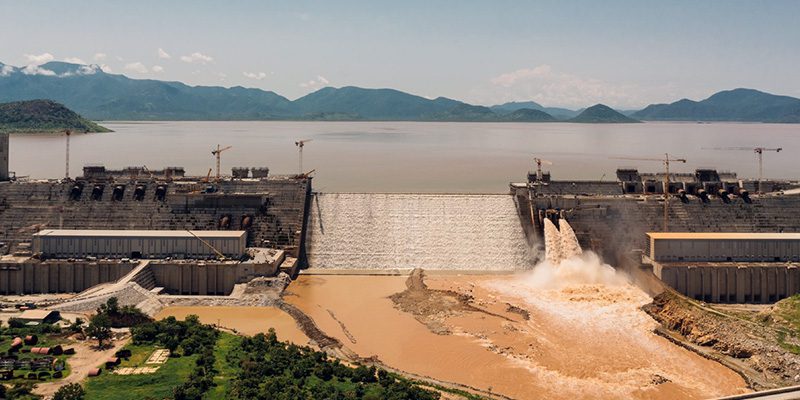
Ethiopia’s Gerd surpasses electricity generation expectations
According to the Ethiopian government, the Grand Ethiopian Renaissance Dam (Gerd) has produced over 2,700 gigawatt hours (GWh) of electricity in the last 10 months.
The Ethiopian Electric Power (EEP) announced that the mega hydroelectric power plant has exceeded its power generation targets in the first 10 months of the current Ethiopian fiscal year. This achievement was reported by state-affiliated Fana Broadcasting Corporate on Wednesday.
According to data from EEP, the dam recorded an increase of approximately 26 percent compared to the initial plan of 2,152.8 GWh.
Gerd’s increased power generation was credited to the dam’s enhanced water storage capacity, allowing its two operational turbines to operate at maximum capacity.
With the recent achievement, Gerd played a significant role in contributing approximately 16 percent of the total 16,900 GWh of electricity generated in the East African country during the reported period. This impressive contribution came from a range of power generating plants located throughout the country.
Once the remaining 11 units are operational on the dam, it is projected to significantly boost the country’s current generation capacity by 83 percent.
In April, the Office of National Coordination for the Construction of Gerd announced that the project construction has made significant progress, reaching over 95 percent.
According to the EEP, the dam will have a generating capacity of 5,150 megawatts once fully completed, resulting in an annual energy output of 15,760 GWh.
The Gerd construction on the Nile River in April 2011 was initiated by the Horn of Africa country. The mega hydroelectric power project has been a significant point of contention among Ethiopia, Egypt, and Sudan, the three countries along the Nile.
Ethiopia consistently emphasizes that the dam will drive its development goals and support its aim to achieve a lower-middle-income status in the near future.
Meanwhile, Egypt and Sudan often voice their worries about the potential impact of the dam on their portion of the river waters.
All Categories
Tags
+13162306000
zoneyetu@yahoo.com


